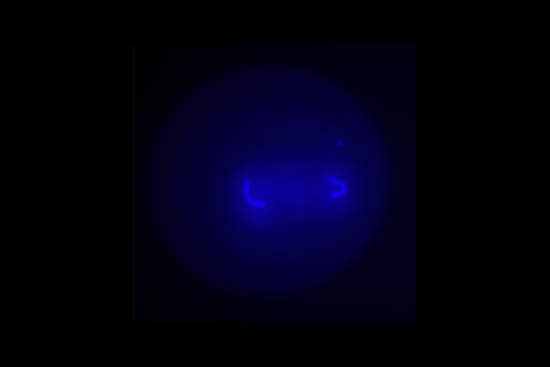Study finds common equine parasite misidentified in textbooks
Study finds common equine parasite misidentified in textbooks

A recent study led by Martin Nielsen, assistant professor at the University of Kentucky Gluck Equine Research Center, found that all veterinary medicine textbooks have misidentified a common equine parasite.
The large equine roundworm Parascaris equorum, commonly referred to as the ascarid, which is known for infecting foals, is actually a different species—Parascaris univalens. The research suggests P. univalensis the main species now observed in equines. The broader designation Parascaris spp. should be used instead unless cytological characterization (a technique for characterizing chromosomes) has confirmed the species.
“Parascaris univalens is really the forgotten parasite,” Nielsen said. “It is almost never mentioned in the textbooks, and most people have only heard about one roundworm species infecting equids.”
P. univalenswas discovered more than 130 years ago.The species only possesses one germ line chromosome pair as opposed to two for P. equorum, but the two species are otherwise considered structurally identical.
“We really wanted to find specimens of both species to study and find differences in their DNA,” Nielsen said. “The only way to tell them apart is to look at their chromosomes, so we invited a leading expert, Dr. Clara Goday, to the Gluck Equine Research Center to teach us the delicate technique of parasite karyoptyping.”
Karyotyping is a technique to study and characterize chromosomes in a sample of cells.
For the study, 30 live worms were obtained and dissected. All of the samples were identified as P. univalens. Then, the karyotyping technique was performed on ascarid eggs from foal fecal samples. P. equorum was not identified among these, whereas P. univalenswas found in 17 samples, with the remaining eight being inconclusive.
“We were part of another study analyzing numerous Parascaris specimens from several different continents, and the conclusion there was that only one species was found,” Nielsen said. “We compared genetic information obtained for P. univalens in our study with gene codes already published as P. equorum and found that they were probably mislabeled.”
Others from the UK Gluck Center involved in the study were Jennifer Bellaw, a doctoral student in veterinary science; Eugene Lyons, professor; and Teri Lear, associate professor. The group from the UK Gluck Center collaborated with Jianbin Wang, assistant professor, and Richard Davis, professor, University of Colorado School of Medicine; and Clara Goday at Centro de Investigaciones Biologicas in Spain.
The article was published in the December issue of Parasitology Research.
The mission of the Gluck Center, a UK Ag Equine program in the College of Agriculture, Food and Environment, is scientific discovery, education and dissemination of knowledge for the benefit of the health and well being of horses. The Gluck Center faculty conducts equine research in six targeted areas: genetics and genomics, infectious diseases and immunology, musculoskeletal science, parasitology, pharmacology/toxicology and reproductive health.
For more information on the Gluck Center, visit http://www.ca.uky.edu/gluck.
Equine


